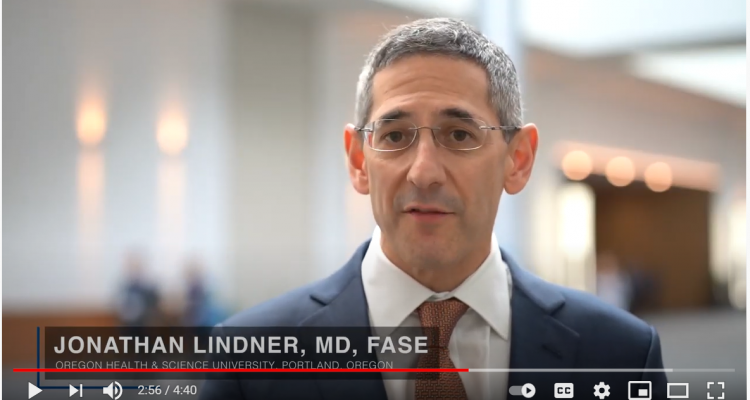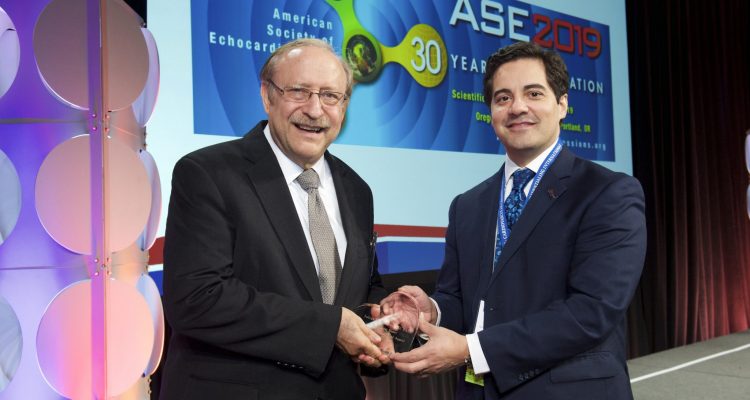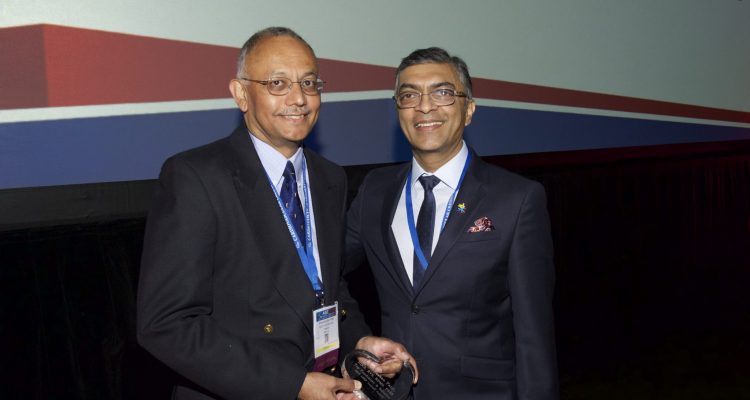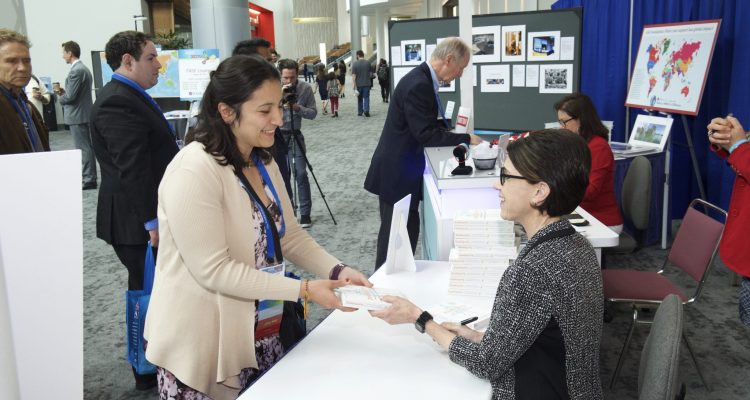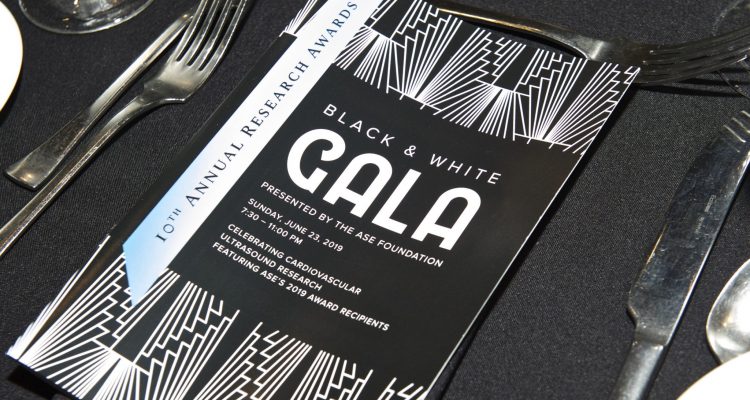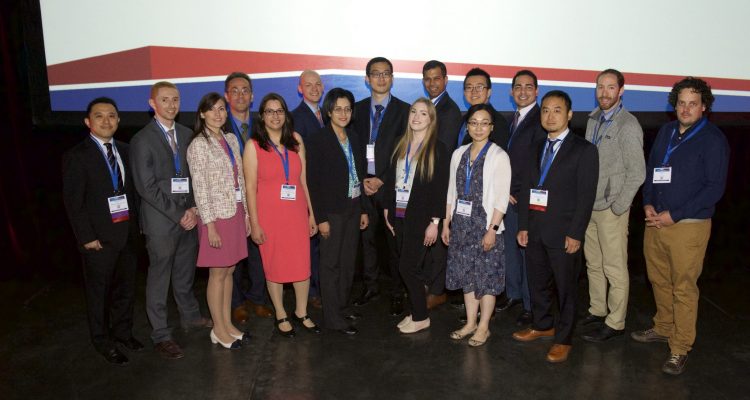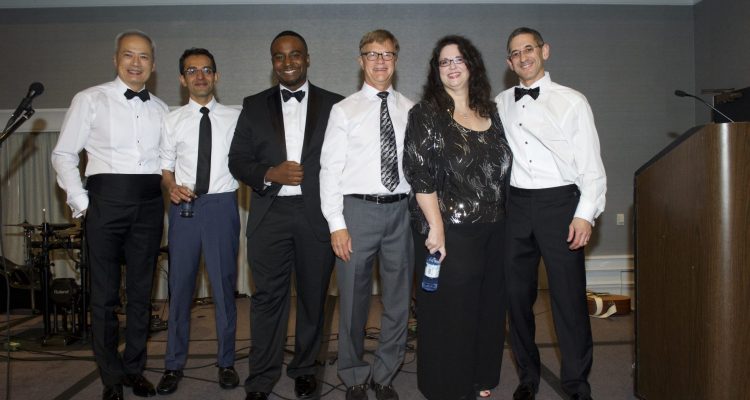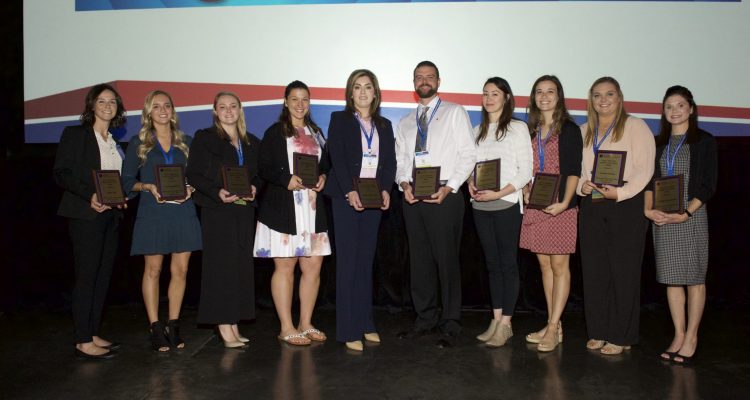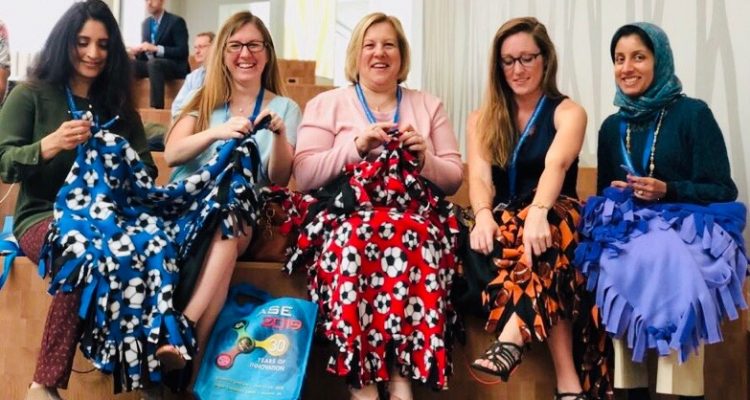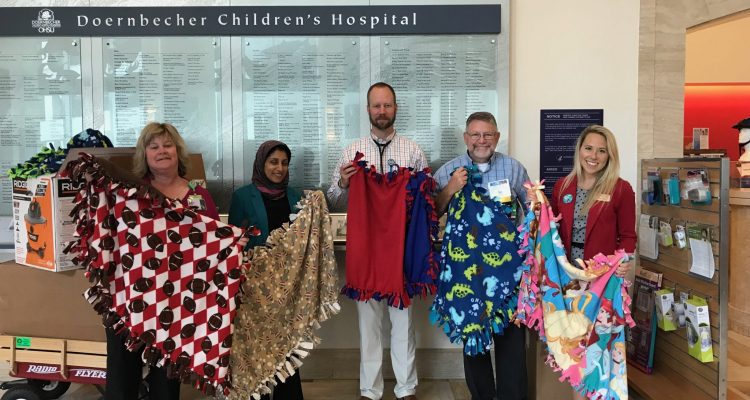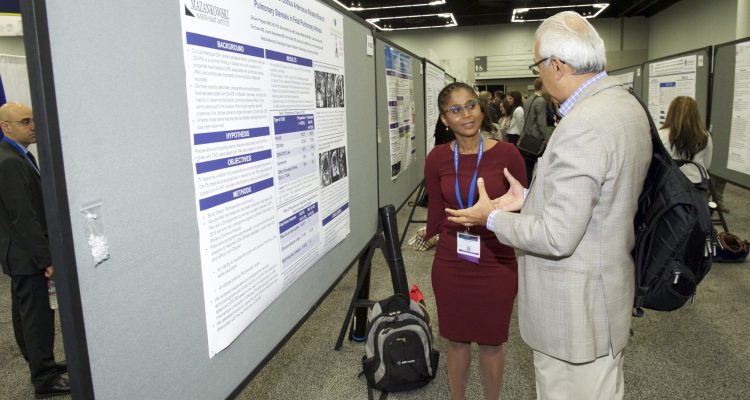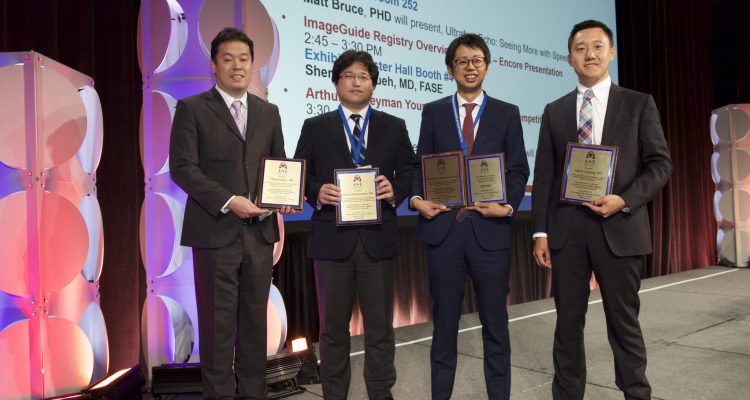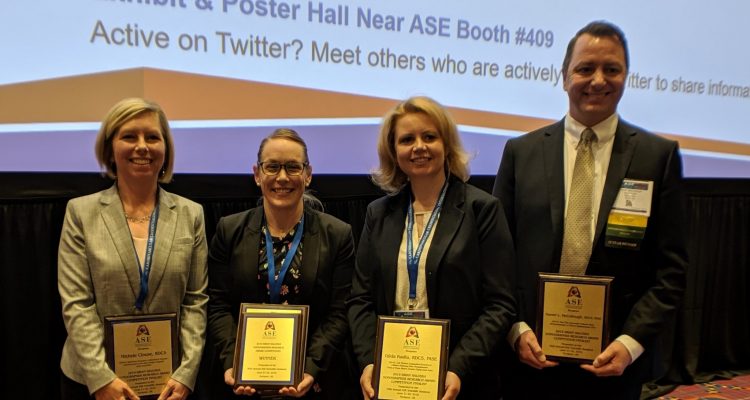Application is now closed. Contact avanhoever@asecho.org for more information.
Overview Information
Funding Opportunity: E21 Research Grant for Clinician-Scientist and Engineering Partnership
Administrative Organization: American Society of Echocardiography
Participating and Sponsoring Organizations: American Society of Echocardiography Education and Research Foundation, American Society of Echocardiography, American Institute of Ultrasound in Medicine, National Board of Echocardiography, Inc., Bracco, Inc., and Lantheus Medical Imaging, Inc.
Funding Opportunity Purpose: The aim of this grant funding opportunity is to promote research partnerships between clinician-scientists and engineering scientists, with the purpose of addressing a major clinical problem in cardiovascular ultrasound imaging.
Key Dates
Applicants are encouraged to apply early to allow sufficient time to make any corrections to errors or omissions found in the application.
- Open Date (Earliest Submission Date): April 10, 2019
- Application Due Date: June 30, 2019, by 11:59 PM EST
- Scientific Review (anticipated): August 2019
- Earliest Start Date: October 1, 2019
Funding Opportunity Description
Background
Research partnerships between clinician-scientists, engineers, and basic scientists have been responsible for most of the major breakthroughs in echocardiography that have happened in the past five decades. The advent of 2-D mechanical and phased-array imaging, color Doppler, spectral Doppler, 3-D imaging, TEE, harmonic imaging, and contrast ultrasound all resulted from interactions between engineering scientists and investigators with unique knowledge in medical imaging and physiology/pathophysiology. These types of collaborations have become much less common. Instead, new ultrasound technology that has been introduced of late has arisen solely from industry and is not always targeted to the most important clinical gaps. The E21 Awards are conceptually designed to solve this issue by offering grant funding for innovative research projects that are similar to the concept and aims of NIH R-21 awards.
Purpose and Description of Program
A requirement for these grants is that they will involve partnerships between emerging or established leaders in clinical research and engineering. The goals for the applications should not be to fully complete the clinician-engineering joint scientific ventures, but rather to make substantial progress towards Aims that can be used for secondary high-level funding from extramural sources (NIH, DOD, etc.), or industry/investor funding. The program will provide three grants of up to $200,000 each to fund projects that will address a clinical gap in cardiovascular ultrasound imaging through a research partnership between clinician-scientists (physician or other allied healthcare worker) and engineers. Key concepts for the awards are that the funding period should be between approximately two (2) years in duration, and the PI of the grant must be a member of the ASE or any of the affiliated societies that agree to partner in the project.
Potential Areas of Research Interest
The overarching research objectives are to support highly innovative approaches to clinical problems in cardiovascular ultrasound that can be solved through engineering solutions. Clinical gaps may include (but are not limited to) diagnostic capability, therapeutic capability, workflow, or patient/practitioner safety. Engineering solutions may include (but are not limited to) acoustic/electrical engineering, mechanical engineering, software development, and chemical engineering. Research examples of interest include, but are not limited to:
- Novel approaches for automated analysis of valve disease or cardiac function
- Novel quantitative approaches for tissue or parametric imaging
- New transducer design and/or contrast agents for therapeutic ultrasound
- Solutions to reduce sonographer workplace injury
- Automated approaches to evaluate patients treated with ventricular assist devices or on cardiopulmonary bypass
- Novel approaches for vascular characterization including flow dynamics, vascular mechanical properties, and vessel wall biology
- Novel approaches for characterization or classification of congenital defects in the pediatric or adult population
- Image-based feedback assistance algorithms
- Novel approaches or technologies for characterizing ischemic disease (coronary and peripheral artery disease) using perfusion imaging
Award Information
Application Types
This award represents a mechanism to monetarily support research that aims to use engineering solutions to solve a relevant clinical problem in cardiovascular ultrasound. The application must involve partnerships between clinician-scientists and engineers. Research may involve biomedical engineering, computer engineering, biology, pre-clinical research, or clinical trials. Applications that rely primarily on database analysis or modeling alone are discouraged.
Award Budget and Duration
Application budgets should be appropriate for the scope of work proposed and may not exceed a maximum of $200,000 total costs. Indirect costs are optional but should not exceed 10% of budget and are applied total costs. The scope of the proposed research should determine the duration of the project but should be no less than one (1) year and no greater than three (3) years.
Eligibility Information
Eligible Applicants
Eligible organizations for qualifying as a primary site include any higher education institutions (colleges, universities), public/state controlled institutions of higher education, or other nonprofit organizations (e.g. with 501(c)(3) IRS Status). Non-domestic (non-U.S.) Entities (Foreign Institutions) are eligible to apply. Industry subcontracts are allowed but for-profit companies are disallowed from being the primary research site. Applicant organizations may submit more than one application, provided that each application is scientifically distinct.
Principal Investigators (PIs) and Co-Investigators
Any individual(s) with the skills, knowledge, and resources necessary to carry out the proposed research as the PI or (co-PIs) is invited to apply for the E21 Award. The PI or a co-PI must be an active member of one of the Sponsoring Societies (ASE or AIUM). Team-based proposals that highlight exchange between clinician investigators and engineers are encouraged and will be considered in the review process. Investigators from industry or a for-profit company can participate as a co-investigator but not as a PI or co-PI. A PI or co-PI may submit only one application.
Awardee Responsibilities
The PI will be responsible for ensuring that all regulatory requirements (i.e. IACUC, IRB, internal institutional approvals) will be met prior to receiving funds. The awardees must also follow the guidelines for the Ethical Conduct of Research (see Award Administration and Reporting below). The PI or a delegate member of the investigational team must be willing to present the results of the research project to at least one and up to two major scientific sessions for the participating nonprofit organizations/societies. Funds ($1200 per meeting) for travel will be provided beyond the budget limitations described below.
Application and Submission Information
Electronic Submission
Completed submissions, saved as a .pdf file(s), should be uploaded to the submission site by the deadline. The submission site will open on April 10, 2019.
Font, Page Formatting, and Figures
Conventional font types (Arial, Times New Roman, Helvetica, etc.) and a font size no smaller than 11-point should be used. Page margins should be no less than 0.5 inch. Embedded figures should adhere to the page margins and should have descriptive figure legends. Figure legends can be smaller than 11-point but must be legible.
Title Page
A title page must contain the following information:
- Descriptive title of the proposed activity
- Name(s), institution(s), address(es), and telephone number(s) of the PI(s)
- Names of other Key Personnel
- Proposed funding period
- Institutional signing authority and/or fiscal administrator
Biosketches
For all key personnel, an NIH-style biosketch must be provided with content (including a personal statement paragraph) and page limits similar to those outlined by the NIH: (https://grants.nih.gov/grants/forms/biosketch.htm).
Resources and Key Equipment (limit 1 page)
A description of resources and equipment that are key to the proposal should be provided. Do not list all resources available to the investigators, but instead limit the description to those resources that are immediately available and critical to the proposal. This section should include a description of laboratory space, computer resources, clinical research or animal resources, core services, and equipment.
Research Strategy (limit 6 pages)
The research strategy should describe how the studies will address a key clinical need or gap in diagnostic or therapeutic cardiovascular ultrasound. The E21 grants are not intended to entirely solve a clinical problem, but to lay the foundation that will lead to major advances in patient care or the practice of cardiovascular ultrasound. Studies may be hypothesis-driven, or may be technical development with key performance metrics. Preliminary data are encouraged but are not necessary. Proposals should include the following components (with suggested page lengths):
- Specific Aims (1/2 page)
- Background and Description of the Clinical Problem (1 page)
- Innovation (1/2 page)
- Scientific Methods (3-4 pages)
- Importance of the Clinician-Engineer Partnership (1/2 page)
References
References will not count against the 6 page limit for the research strategy. References should be numerical in order of their appearance in text. No particular reference style is recommended.
Budget and Budget Justification
Budgets should be comprehensive and should include separate information on Personnel (salary, % effort in calendar months, OPE), Equipment, Materials/Supplies, Travel, Publication, and Miscellaneous costs. Indirect costs are optional and should not exceed 10% of total costs. Budgets should be categorized according to yearly increments beginning with the start date. The format (Word, Excel, etc.) for the budget is at the discretion of the applicants. A budget justification (limit 1 page) should also be provided.
Supporting Letters
Letters of support and collaboration are needed from all key personnel listed in the project confirming their role in the project. Additional letters are also encouraged from any other individuals who can address the impact of the proposed research or the scientific environment and resources.
Other
For investigations that include vertebrate animals, an NIH-style Vertebrate Animals Section is required, and IACUC approval will be necessary before release of funds. For clinical studies, proof of institutional review board (IRB) approval will be necessary before release of funds.
Application Review
An E21 Research Grant Review Committee composed of experts with broad representation from the field of cardiovascular ultrasound will review the proposals. All applications will receive a full written critique. Grants will be assessed based on the scientific and technical merit of the proposed project as determined by scientific peer review, and relevance of the proposed project to program priorities. An Overall Impact score will be generated based on the scored review criteria below:
- Potential impact on clinical care
- Innovation
- Scientific method/rigor
- Investigators, environment, and importance of clinician-engineering partnership
- Potential for stimulating future funding
In addition, reviewers will consider whether the budget and the requested period of support are fully justified and reasonable in relation to the proposed research.
Award Administration and Reporting
Award Notice
Selection of an application for award is not an authorization to begin performance. Any costs incurred before receipt of research funds are at the recipient’s risk. These costs may be reimbursed only to the extent considered allowable pre-award costs.
Award Termination
The funding source reserves the right to terminate grant support and request the return of unused funds for any violations of the NIH Principles for Ethical Research (https://www.nih.gov/health-information/nih-clinical-research-trials-you/guiding-principles-ethical-research). These principles include scientific validity, informed consent, fair subject selection, human and data safety measures, and humane treatment of animals.
Reporting of Findings
For multiyear projects, a brief interim Progress Report will be required at the one (1) year benchmark. Within sixty (60) days of completion of the total funding period, a final E21 Progress Report will be required. The contents of the Progress Report will be provided at the time of funding notification. The PI will be responsible for the submission of the final Progress Report. Acceptance of grant funding will include written confirmation that the PI or a delegate member of the investigational team will present the results of the research project to at least one major scientific session for the participating nonprofit organizations/societies. Funds (up to $1,200 per meeting) for travel will be provided.
Grant Extension
The project is expected to be completed within the timeframe budgeted by the investigators. However, should circumstances arise that make this impossible, with proper written notice and justification from the PI, a limited no-cost extension will be considered.
Contact Information
Inquiries concerning this funding opportunity can be directed to:
General Grant Information (Questions regarding application processes and grant resources)
Andrea M. Van Hoever, MSGH
Deputy Director
American Society of Echocardiography
Email: avanhoever@asecho.org (preferred method of contact)
Telephone: 919-861-5574, ext. 7163
Scientific/Research Contact (Questions regarding application processes and grant resources)
Jonathan R. Lindner, MD, FASE, FACC
M. Lowell Edwards Professor of Cardiology
President, American Society of Echocardiography (2018-2019)
Oregon Health & Science University
Email: lindnerj@ohsu.edu (preferred method of contact)

